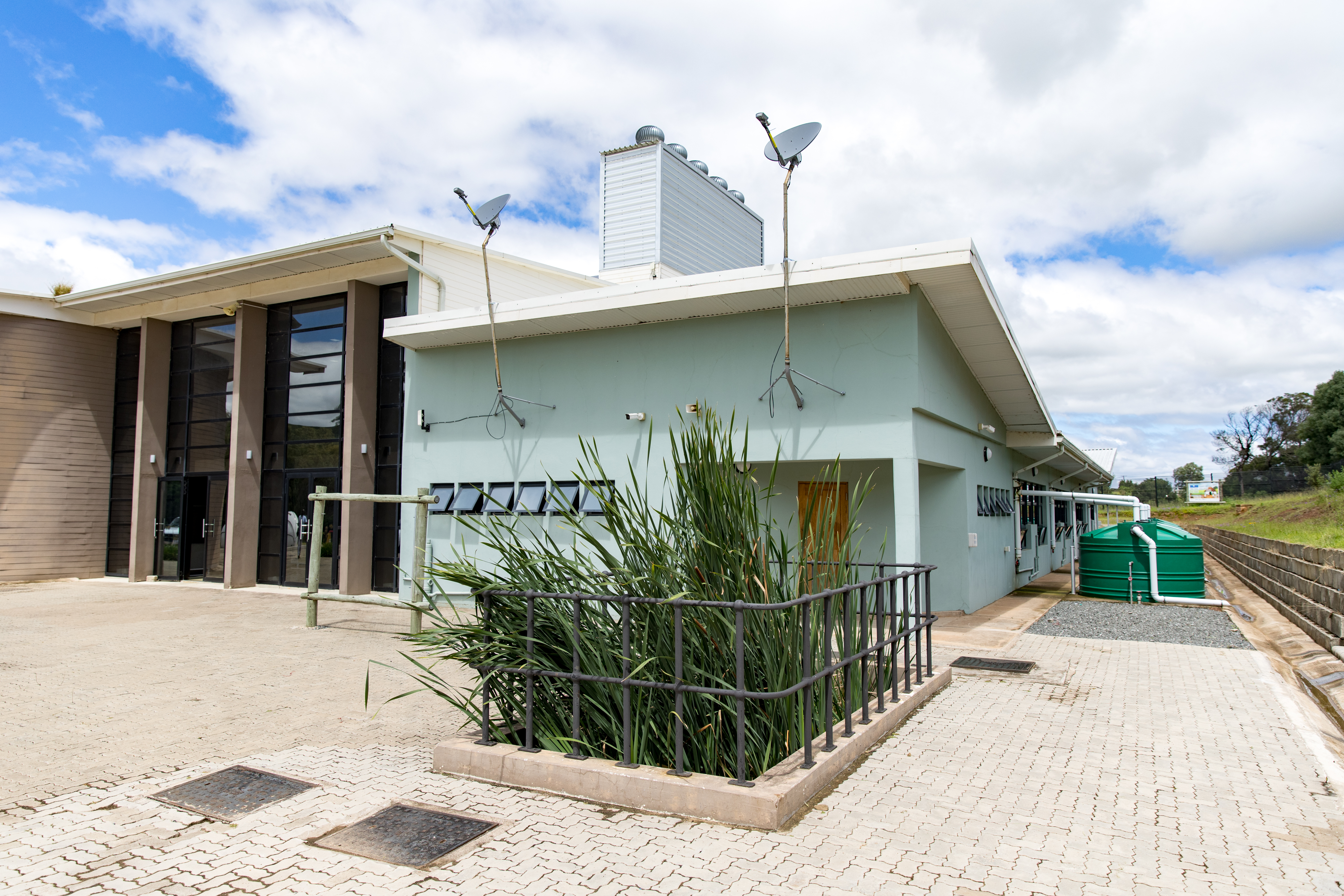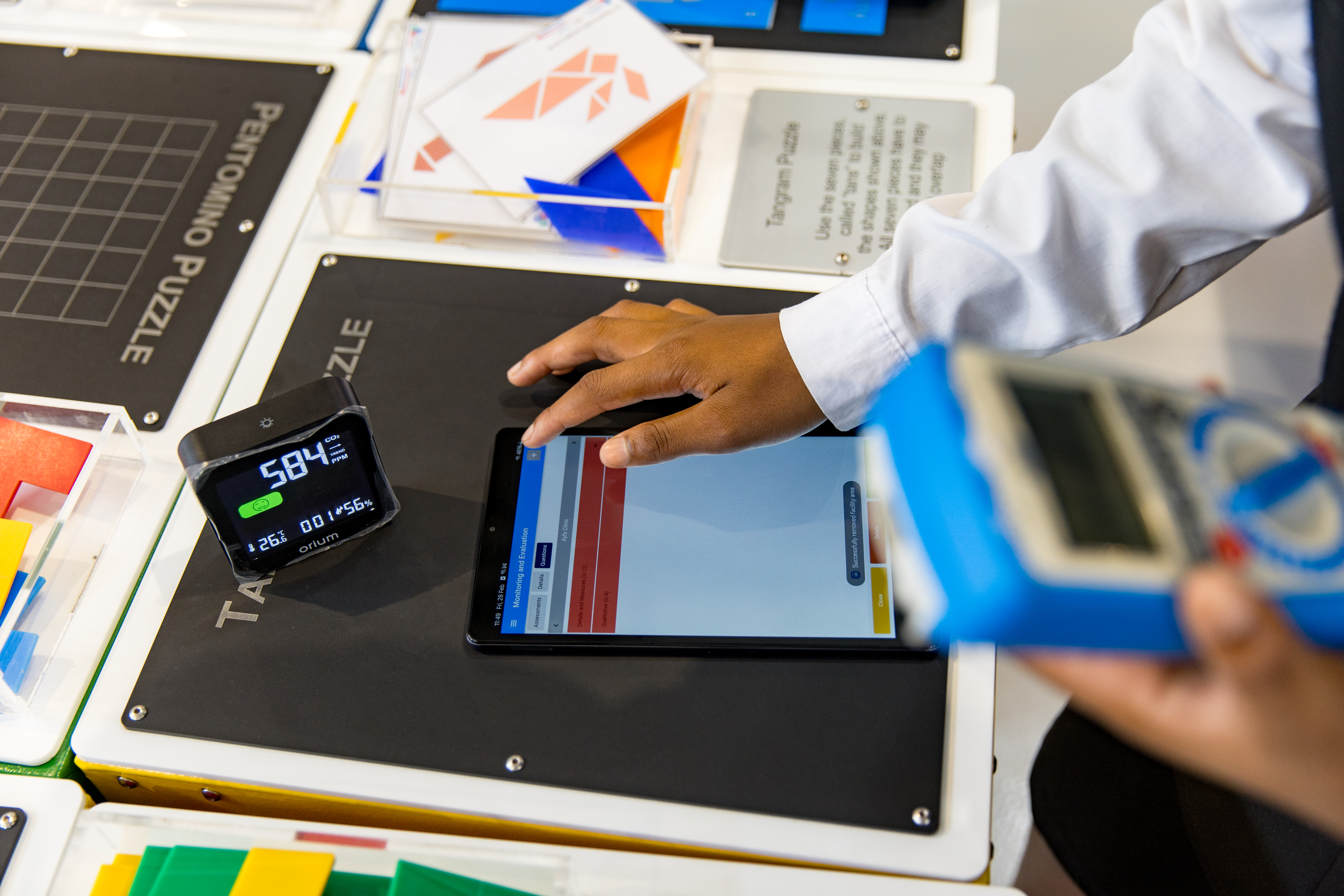Cofimvaba learners log green scores for CSIR-designed science centre
South Africa’s first net-zero science centre, designed by the CSIR, is now an ongoing citizen science experiment in green building practices and a model for future buildings. Learners from two nearby high schools in Cofimvaba, Eastern Cape, use tablets to score the building’s thermal performance, while its water and energy efficiencies are monitored in a digital twin building.
CSIR research architect Tinashe Dube says that the existence of this technology in a rural village proves it can be implemented anywhere.
Dube is based at the CSIR’s Pretoria campus but regularly visits the Cofimvaba Science Centre to engage with and teach learners about the building’s innovative construction materials, ventilation systems, solar energy, wind energy and water reticulation systems.
The CSIR, in partnership with the Department of Science, Technology and Innovation (DSTI) and Eastern Cape authorities, designed and oversaw the construction of the science centre to demonstrate the feasibility of sustainable buildings. The centre serves 26 schools in the area and features additional exhibits designed by DSTI entities that encourage learning and careers in science and technology.
“This is the first science centre in the country that is built from scratch as a science centre,” says Koki Selepe, DSTI Deputy Director: Science Promotion.

She says the building and its exhibits were developed to meet the needs of rural Eastern Cape communities and their environment. With the province being so windy and sunny, for example, the centre shows that wind and solar energy are viable even in rural areas where municipal service delivery is challenging.
“We have another exhibit that focuses on agriculture – this region is rich in agriculture and these exhibits show the community how they can produce their crops using today’s new technologies,” she says.
The facility also features classrooms, laboratories for chemistry, physics and computing, and a multi-purpose lecture theatre that doubles as a planetarium. This supports the global Square Kilometre Array radio telescope project underway in the Northern Cape, involving institutions from over 20 countries.
Dube says the building also features a reed bed to clean and recycle greywater, as well as a rainwater harvesting system. “The building is self-sustaining, providing water to the taps.”
She explains that the building was constructed for maximum thermal comfort using vents and a solar chimney, eliminating the need for additional energy for heating and cooling. “We used the principle of science that hot air rises and cold air sinks. When it's hot, the whirlybirds or the solar tower, will heat up. It will draw up all the hot air and pull cold air through the ducts. And, when it is cooler, it works in the inverse to force hot air down through the tower.”
The building was also constructed without a single brick, she adds. “We used light steel frames for speed of construction and for insulation.”
Prefabricated steel frames in the roof and building frame, as well as a polystyrene-based walling system, ensure that the building has a much lower carbon footprint.
“These lightweight materials reduce transportation load and associated emissions,” says Coralie van Reenen, lead CSIR architect on the project. “They also minimise the need for water and the use of cement in construction, and less construction waste is generated.”
Van Reenen says the project has been an opportunity to turn research theory into practice, showcasing innovation and building science to support sustainability. She adds that the doors opened to the public in October 2020.
“The building has been completed and has become a research project in itself,” says Dube. “It is now an experiment in which we monitor and evaluate whether the principles used in its design and construction, are working or not, and we've involved citizens.”
She explains that grade 11 and 12 learners from Saint James High School and Cofimvaba Secondary School, both within walking distance of the centre, monitor the building’s performance using tablets loaded with the CSIR’s BROAD Facility Assessment Tool. ‘BROAD’ is short for ‘Building Risk Operation And Design’.

“They come and check the data points, especially around temperature control and comfort within the building,” says Dube.
“There's also a concept we use, called a digital twin, which is where you use data to monitor real-time occurrences,” she says. “In this case, we use the data to monitor the real-time performance of the building from Pretoria while they're giving us the readings.”
Dube says it is important to expose learners to green building practices and technologies like digital twinning early on so they will be equipped for technologically advanced careers in the future. This, in turn, will help bridge the gap between the more and less developed regions of South Africa.
She adds that the community and learners are also teaching scientists along the way.
“This being a rural area, there's a different sort of knowledge that the inhabitants of the area have just from living here. So, they'll be able to bring new learnings, new understandings and new applications of what we can do with digital twins and building monitoring when it's their time, which is very soon.”
The CSIR and the DSTI plan to share and replicate the methods used in the planning, design, procurement, construction, commissioning and operation of the Cofimvaba Science Centre across South Africa.
“We are looking forward to enhancing the relationship and the work collaboration that we have with the CSIR in terms of linking the science with the everyday life of the people,” says Selepe. “After having learnt enough here together with them, we will go and explore and expand the lessons learned here into the rest of the country.”
This research forms part of the DSTI science awareness campaign in partnership with SAASTA, and it is funded by the DSTI. It addresses SDG 4, SDG 6, SDG 7, SDG 9, SDG 11 and SDG13.

